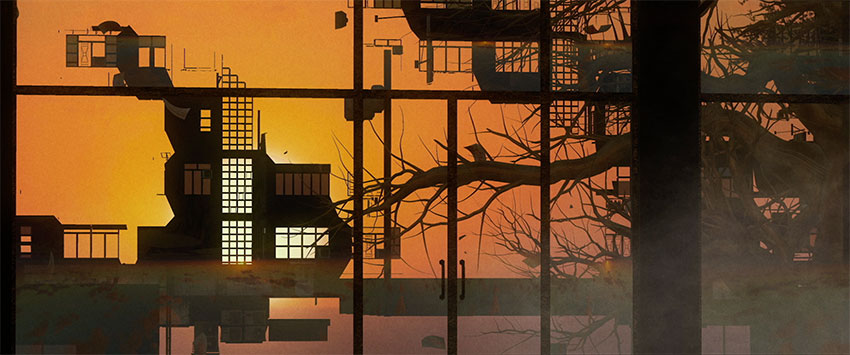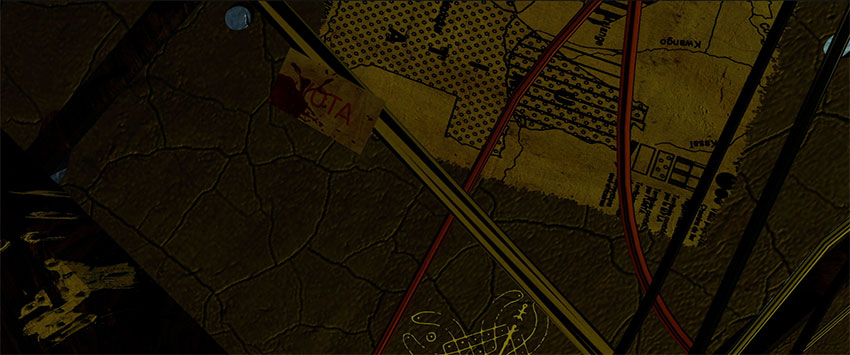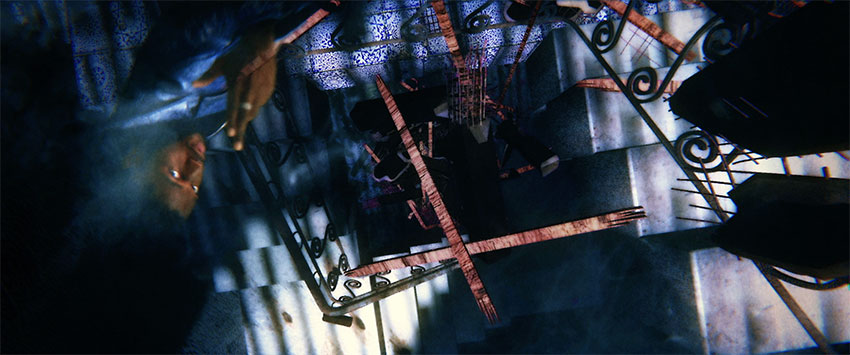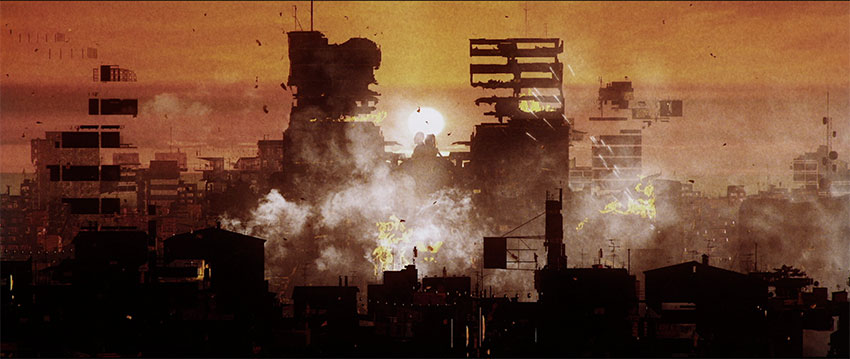Text by Meritxell Rosell

In recent years contemporary political art seems to be experiencing a substantial upturn. Contemporary artists are deeply concerned with the current social and political issues that have been upheaving our lives.
From post-war art and protest art of the 60s, new technologies have been playing an essential role in shaping this new wave of the current, even aiding to create new art forms, such as the much-discussed Forensic Architecture, a multidisciplinary research-based and politically committed group based at Goldsmith’s University London that uses architectural techniques and technologies to investigate cases of state violence and violations of human rights around the world.
Spanning architecture, journalism, law and science, this practice hasn’t been exempt from controversy. As with all the most interesting movements, there’s controversy over whether it’s even an art form.
As with any new current, some artists have been incorporating concepts and ideas from Forensic Architecture into their practices. This is the case of Rob Heppell, a director and artist working with vision politics, moving image, 3D and VFX to experiment with sites for narrative and experience. Working at Somerset House studios along with musician Gaika, together they have developed several audiovisual and installation projects, such as Lamborghini Copz (2019), a spatial consideration of the cybernetic relationships between law when everything is already crumbling. Lamborghini Copz was shown as an installation at Ø, the series of mid-week parties organised by Kode9 at Corsica studios, one of the freshest things to happen in London’s nightlife recently.
Hyperdub, the record label founded by Kode9, has always been deeply involved in current societies’ social and political structures, particularly in the UK. A few months ago, the label released Nazar’s debut album Guerrilla, which has proven to be one of the year’s most popular releases. The record is autobiographical, an audio narrative about the artist’s family’s engagement in the Angolan civil war, where his father was a general, fighting while his family (including Nazar) lived in exile in Belgium.
Guerrilla, Nazar says, comes from his practice of what he calls the “artistic digitalisation of memories into soundwaves”. Shattered breaks and footwork, early house and techno disrupted by noise and distortion filled with vocal samples and field recordings narrate the true stories behind each track, giving the feeling of an eleven-episode documentary series. The cutting track Bunker, for which Heppell has produced an impressive video, remembers the aftermath of the 55-day war that followed the 1992 elections and left over 12,000 dead.
With an opening sequence reminiscent of the silhouette cut-ups of Lotte Reninger and the spacial aesthetics of Tropico (an acclaimed simulation video game which also covers political issues in the modern world – including election fraud, restriction of speech, totalitarianism and corruption), the video seduces you into its intricate spaces from the very first start.
In an extended director statement, Heppell explains that Nazar told him about a situation in Angola in 1992. After 17 years of the civil war with countless lives destroyed between warring factions – the ruling MPLA agreed to hold an election. Politicians from militarised groups came to the capital Luanda for the election.
Wary of the potential for a lure to trap them in the heart of the enemy territory, the UNITA party supporters helped stage and vote in the election. When the result was declared a victory for the ruling party, it disintegrated into claims of a rigged vote. MPLA troops began killing rival supporters all across the city, at voting stations and newspaper headquarters and in the street, in violence that would reignite another 13 years of civil war.
Two luxury hotels, the Tropico and the Turismo, usually the domain of international journalists in Luanda, were the accommodation of the opposition parties staying in the capital for the election. When the election erupted into violence, the people staying in the hotels were forced to barricade themselves in their rooms to hide from the government army squads sent to kill them.
As Bunker is written from the perspective of someone trying to survive inside the hotel, Heppell wanted to create a line of flight through this situation: Initially, I tried to create an accurate reconstruction of the actual spaces within the hotels, but through the process, this changed. Through researching the Angolan civil war, I wanted to create something that would create the emotional context for the song. A claustrophobia of ruptured rooms, skeletal remains of luxury hotels, the transformation of personal space turned into a political no man’s land through extreme violence, the shifting centre of an infinite war. The camera moves as the memory of a soul on the breeze through a city experiencing a coup after an election.
The development process took the director to discover the storytelling of Lusona patterns which are a traditional narrative form in some parts of Angola and represent ways of telling creation stories and spiritual and moral fables, which he combined with editing theories and forensic architecture reconstruction practices.
I wanted to create the video as a one-shot because the continuation of the shot provides direct context between all the areas and emotionally intensifies the piece as it progresses. Walter Murch suggests that editing works because cuts feel natural because they mirror the psychological purpose of blinking […]. By extending the viewer’s attention longer than the natural blinking, the viewer is forced to blink without the subconscious rhythm of the cut. Creating a sort of hypnotic distrust with the film puts you on edge but mesmerises the viewer in a gaze inundated with collapsing structures, symbols and debris.
In the statement, Heppell expands on Lebbeus Woods’ theories about architectural memory in the context of the reconstruction of buildings damaged by war and how preserving and highlighting the scars of war might be a better way to proceed following a conflict. Architectural scars left as a pacifist warning for all to see: I wanted to make something that would bring this position into focus. Through the buildings are woven military maps, paintings by exiled Angolan artist Viteix, Lusona patterns and models of period artefacts. Sections of the hotel are haunted by moments of violence and destruction, gunfire and collapsing areas looping endlessly through sections of the structure. In this piece, all of the moments of action have been reconstructed into a spatiotemporal relationship that the viewer’s presence activates.
The idea of this is to give a sense of a feeling something like how a forensic architect would later read the patterns of destruction in an object. The scars left in the building makeup part of a sensorium, a hypertext of form and the history of actions, combined through research into a hybrid model of information. The concept of buildings being sensitive to the actions that happen within them also has a parallel in the paranormal concept of Stone Tape Theory. The artists are framed as sci-fi witnesses and haunting this space, protagonists in a holographic memory, the perpetual reconstruction of a nightmare moment living in the real world.

Asked when he started becoming interested in forensic architectures practices, the director says it happened around 10 years ago when he visited Palestine: I had little understanding of the occupation, but I found a copy of Eyal Weizman’s (founder of the Forensic Architecture group at Goldmisth’s University) book Hollow Land before we left. Staying in several cities across the West Bank, we encountered the complex ways in which territory is divided up and life is made hell through military and architectural occupation. In detailing how the military, civic plans and domestic architecture had been articulated to intensify areas of occupation the book helped put the experiences of the Palestinian people we met into both a physical and political context, exposing the inscription of war across the Palestinian landscape.
Architecture can be read as a kind of built sediment of a life lived within, manipulated through political action. The forms of buildings chosen, the damage to those buildings, record the lives of people in that place. This is similar in some ways to the paranormal concept of Stone Tape theory – which suggests that ghosts are in effect spirit trapped recordings of people who have lived within the building, recorded by the stone of the building itself. Moments of life, particularly intense incidents – are repeated endlessly – a haunting being a disembodied trauma loop, preserved beyond the life of its host. In urban warfare against civilian populations, architecture is both the site of specific attacks and the means of attack. Through reading their work, you begin to start seeing both brutal and subtle traces of the securitocratic dimension left in architecture.
Forensic Architecture have taken a form of inquiry which initially referred to the process of reading architectural damage in an insurance or legal claim. Combined it with methods from visual effects, mapping, political and aesthetic inquiry into an expanding language of hybrid techniques for the creation of models as evidence in human rights cases. In these situations, state action often obstructs a consensus truth or can be hidden in esoteric sources. Constructing a model containing information and visual data can provide a much stronger argument for prosecuting justice.
Moreover, the group have developed a network of specialist techniques, both technical and philosophical, to develop models like this. Three years ago, I took some months being unemployed to recover from animation sleep patterns. Forensic Architecture was doing a course at the ICA, and following that course, I spent some months focusing on working out how to approach this in writing and animation. I have tried incorporating some of these techniques as storytelling devices and lines of inquiry. This direction put interrogating perspective, illustrating context into my work, and pushing me to use music videos as platforms for inquiring into politics.
Since then, he continues, he’s been incredibly lucky to develop work with artists who appreciate this dimension and want to tell stories that exist within it: Working with Gaika over the last couple of years we have developed several projects that focus on political and architectural inquiry. The Roundhouse commissioned us and 14-18 Now to make a piece in response to the idea of the spoils of war of WWI – as part of commemorating the war’s centenary. I used the video for Treaties to create a sci-fi transposition of the Balfour Declaration which explored the forms of Israeli security architecture and Palestinian house demolitions, left in a future without humans. The leftover structures have become a kind of memory-coral, exoskeletons of occupation left to divide the desert.
This approach lead directly to my work for Nazar. Nazar told me about a situation in 1992 in Luanda which involved members of his family and many others being trapped in the middle of the city as the ruling party sent soldiers to murder them following a rigged election. It was such an intense moment within the complex machination of the Angolan civil war. I wanted to make something that felt like it exposed different lines of context, and through this recontextualisation, the spaces are transformed:
The surrounding war turns the hotel room into a collapsing bunker for the people inside,
the hope of the election has become a flurry of voting slips on the breeze,
military maps become waste paper mending cracks and rebuilding damaged buildings.
Working through this environment with cinematic language from Hype Williams music videos:

When asked why architectural constructions are so relevant and central to civil conflicts and narratives and storytelling Heppell explains that architecture is central to conflict and storytelling because it is how we articulate territory for life to exist through. Conflict is about storytelling in terms of context and architecture is constructed and reconstructed through conflict. Civil conflict is where there are multiple stories about the division of territory that can’t live together, and violence can erupt from storytelling.
In his view, architecture can be social storytelling – the creative and industrial processes that lead to architecture being designed can be seen as a record of how people could imagine space through time; the degradation to those structures can show the situations they’ve been a host to. Storytelling is the record of those changes. William Burroughs believes humans have stopped evolving physically because we create external technologies to do everything with our shape. Buildings are a form of this, and as such a part of us as an expanded techno-organism. The bunker was built within those ideas -he continues- I focused a lot on ways of presenting the site of conflict as an architectural and contextual construction. The bullet holes all come from somewhere.
While the Bunker video was shot in October 2019 at Studio GKZ, Somerset House London and animated over the next eight months while under lockdown in China and the UK, the piece evolved as a concept over quite a long time. Heppell shot Nazar and Shannen’s performances with the idea of creating as much flexibility for the animation stage, planning to make something with abstract models built out of photographs of the actual buildings of the Tropico and Turismo hotels. Going into the process details, Heppell shares:
I built up an archive of footage and imagery to build these models, there were a lot of problems with finding images of the buildings- one of them had been rebuilt and I could only find images of it in its current state, and the other I could only find historical images from the 1960s and low-resolution external photographs of it as a derelict structure. I began to amass imagery from other sites that felt like they represented the incident I was trying to describe; abandoned brutalist hotels in Angola and the Azores, the aftermath of massacres in hotels in Mali and Mumbai, video and photography from the Angolan civil war.
I started to build things into models that highlighted hidden details – and ended up with a model that was too complicated and with more details than I could show. The idea to do it all as a one-shot came as a way of showing that everything was in direct physical relation to each other- and developed into a kind of figurative dance between hitting sounds from the music and unfolding the disaster through exploding debris and context. This style emerged from obsessing over the river poem sequence in Tarkovsky’s Stalker and Gaspar Noe’s Enter the Void.

This meant that I had to build complex sequences around incorporating relatively few potential performance angles which I had pre-shot. I wanted to have lots of moving layers of conflict and context swirling around Nazar and Shannen, hitting beats and dramatic action with the track’s tension.
For the director, the biggest problem was the continual process of getting the different layers – performance, animation, storytelling and music to synchronize properly- requiring lots of reworking to get right. Working like this has involved developing many specific animation processes and thinking, and you always build sections you can’t use because the camera track has to work. It looks like it was constructed as a building might be; drawing blueprints leading to foundations and structure, but actually, it’s more like a nest of constructed and then shattered models, welded together with VFX with debris sprayed between.
Technically probably the biggest challenge was the concept-making; the required technical and lateral thinking complex – every adjustment required adjusting other layers to prepare the space for it. On the other hand, he feels the biggest successes were found in lots of new ways to cheat cinematic effects digitally:
Action cinema has a language of choreographed destruction; Kevin B. Lee’s great film Transformers; The Premake [1] shows the impositions of the immense constructions of these “big trainset” productions that people like Michael Bay and James Cameron used to make these films. For Bunker, I wanted to approach this language but without the scale of production or crew. Breaking this down into the abstract forms of debris and explosions using hi-res stock of fire, blood splatters and smoke, obscured by animated moving silhouettes, made it a really satisfying piece to construct.
Taking from the protest art of the 60s to social realism to relational aesthetics and social engagement, to the activist strain of much post-internet art and the new practices of Forensic Architecture, Rob Heppell’s work becomes a sentient visual representation of political and social unrest, giving a new dimension to ideas and voices that need to be heard more. Using his own words as a beautiful coda the breeze carries the camera through the liminal states of life and death and the fight for political and historical representation.






